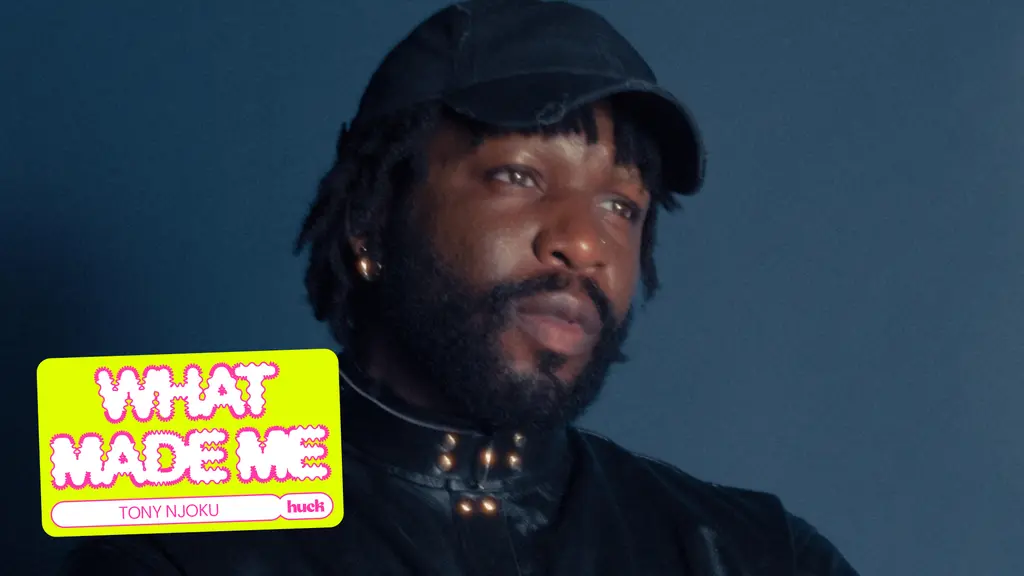Rip it up: the anarchic designs of punk and post punk
- Text by Miss Rosen
- Photography by Andrew Krivine

By the mid-’70s, music collector Andrew Krivine had gone off rock and roll. What had once embodied the revolutionary spirit of youth had become a bloated, pompous dinosaur raking profits for money-hungry music industry executives. Then, he found punk.
“For me, punk heralded a new era in rock music,” he says. “It had brevity, aggression and sonic velocity that spoke to me emotionally. It became my music.”
During the summer of 1977, Krivine travelled to London to visit his family. While there, he purchased the Clash’s debut LP, marking the start of what would become one of the world’s largest collections of punk ephemera.

DEAD KENNEDYS: 1 ‘Kill the Poor’ 45 front cover, Cherry Red Records (1980)
“I have always been a collector,” he says. “I am not sure if this activity reflects a compulsion to either impose order and depth over one subject, or to fill a void in my soul! But I can say that creating something tangible, enduring and definitive has been a gratifying journey.”
Now, some 700 pieces of memorabilia have been brought together in the new exhibition and book Too Fast to Live Too Young to Die: Punk and Post Punk Graphics 1976-1986 (Rizzoli) and limited edition (Rocket 88 Books).
“The major transformational aspect of punk was to allow freedom of expression separate from the increasingly homogenised design styles that were prevalent in the mainstream media and advertising of the late 1970s,” Krivine says.
“Nothing in punk design was new, except the attitude. But it was that attitude – iconoclastic, irreverent, rude and witty – which had a transformative effect on graphic design.”

THE CRAMPS: flyer for concert at CBGB’s, New York City, NY (24 May 1977), The Cramps design
Inspired by countercultural design movements of the past, a new generation of artists fused the political and surreal into a provocative mix, concocting a visual language as explosive and influential as the music itself.
Because of them, punk elements like stencils, collage, Day-Glo colours, rips, zippers, and razor blades have now become staples of mainstream design.
“Despite the nihilism and anti-materialism of the original punk scene – newspaper collages were the ultimate punk design because they recycled trash in aesthetic and form – the very idea of original punk artworks becoming collectable is incredibly ironic,” Krivine says.
“Punks believed that everything was worthless, that there was no future and so no point in making anything that might ‘last’. So, anything which has lasted from that period is rare – and rarity has a high worth. But the attitude of punk, that disruptive, dismissive, trickster-like, ironic, witty and inventive, sneering and political quality of punk design, is what matters most.”

BLONDIE: Plastic Letters LP poster, Chrysalis Records (1978)

RAMONES: Punk Magazine #3 (1977), signed by the band

Sex Pistols – 1975 signed JReid drawing of Steve Jones. SEX PISTOLS: flyer (c.1975), Jamie Reid design, signed by Reid

X-RAY SPEX: ‘Identity’ 45 banner poster, EMI Records (1978)

THE CLASH: Get Out of Control tour blank posters (November 1977), Sebastian Conran design (courtesy of Sebastian Conran)

Due to COVID-19, the exhibition Punk Graphics. Too Fast to Live to Young to Die. at ADAM – Brussells Design Museum will reopen at a later date. The limited-edition will be released by Rocket 88 during Summer 2020.
Follow Miss Rosen on Twitter.
Enjoyed this article? Like Huck on Facebook or follow us on Twitter.
You might like

Nina Utashiro builds disquieting, macabre sonic worlds
Huck x Eastern Margins — We caught up with the Japanese-German rap experimentalist ahead of her performance at Huck’s SXSW London joint event with Eastern Margins.
Written by: Isaac Muk

Huck teams up with Eastern Margins for a special SXSW London showcase
From Shibuya to Shoreditch — Taking place at Village Underground on Monday, performances will come from MONO, Nina Utashiro, Ena Mori, Jianbo, LVRA & Soda Plains.
Written by: Isaac Muk

Analogue Appreciation: Shura
I Got Too Sad For My Friends — In an ever more digital, online world, we ask our favourite artists about their most cherished pieces of physical culture. Today, it’s English singer-songwriter Shura.
Written by: Shura

After Assad’s fall, Syria’s musicians rebuild from the rubble
Spaces Between the Beats — Following decades of dictatorship and 14 years of civil war, the country’s classical and creative scenes have an opportunity to build from scratch. Andrei Popviciu speaks to the people hoping for a flourishing new era of art and sound.
Written by: Andrei Popoviciu

At Belgium’s Horst, electronic music, skate and community collide
More than a festival — With art exhibitions, youth projects and a brand new skatepark, the Vilvoorde-Brussels weekender is demonstrating how music events can have an impact all year round.
Written by: Isaac Muk

Tony Njoku: ‘I wanted to see Black artists living my dream’
What Made Me — In this series, we ask artists and rebels about the forces and experiences that shaped who they are. Today, it’s avant-garde electronic and classical music hybridist Tony Njoku.
Written by: Tony Njoku